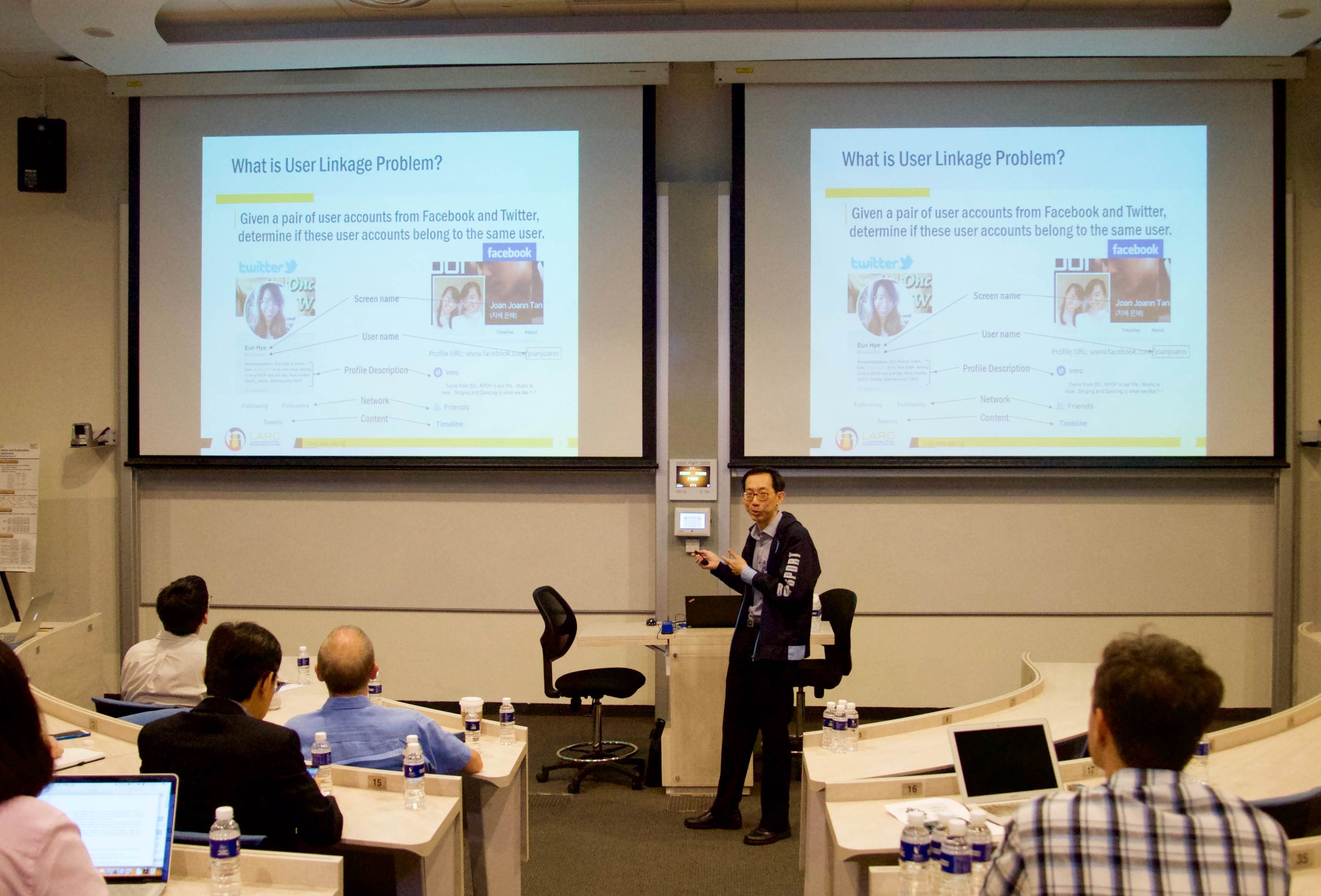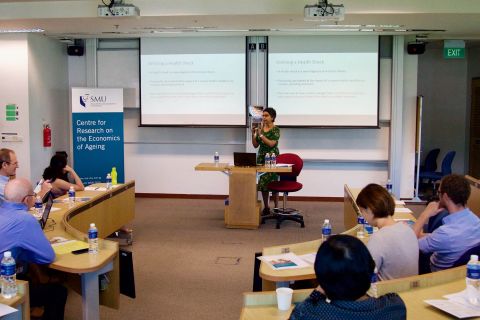
By Sim Shuzhen
SMU Office of Research & Tech Transfer – In today’s connected world, English poet John Donne’s oft-quoted words “no man is an island entire of itself” have never been more accurate. Whether it is connections to family members, friends, colleagues, social media followers or even acquaintances whose names you can barely remember, our lives are marked by social ties, be they tenuous or strong, online or off.
By studying these social networks – mapping their shapes, sizes and spheres of influence, for example – researchers can gain insights into topics as diverse as societal cohesion, the inner workings of terrorist groups, and the ability of research funding to drive scientific collaborations, just to name a few.
To provide a platform for researchers from diverse fields to discuss their work and explore collaborations, the Singapore Management University’s (SMU) Living Analytics Research Centre (LARC) organised a Social Networks Day Workshop on 24 May 2018. Reflecting the multidisciplinary nature of the field and its widespread applications, the workshop featured speakers from computer science, sociology, engineering and mathematics, who presented their work on topics such as social network analysis, network diversity and network effects.
Across social media platforms: what’s in a name?
While most studies of social media networks consider only one platform, the reality is that social media is now so pervasive that many people have accounts across multiple platforms, said LARC director Professor Lim Ee-Peng in his talk ‘User Linkage in Online Social Networks’.
The ability to perform user linkage – to find the accounts belonging to the same user on different platforms – will help researchers determine how widely applicable their findings are, said Professor Lim, who is also a faculty member at the SMU School of Information Systems. User linkage also has business applications, he added – companies want a more holistic understanding of customers’ preferences across multiple platforms so that they can make better product recommendations.
But user linkage presents a complicated problem – different users can have very similar attributes, and conversely, the same user could maintain very different profiles on different platforms. Professor Lim’s team thus set out to develop and evaluate several methods of user linkage, using a dataset of nearly 2,000 users with both Facebook and Twitter accounts.
One promising method of matching accounts across platforms is via screen name or username similarity. “People prefer similar or identical names for easy recall,” Professor Lim explained. “Because of this, we can start to design ways of measuring how similar these names are.” The researchers found that certain measures of similarity, in particular the n-gram method, which represents screen and usernames as vectors, could be used to correctly match Facebook accounts with their Twitter counterparts nearly 80 percent of the time.
On the other hand, attempts to match accounts based on the similarity of their content – what users post – were much less successful, succeeding only two percent of the time. This indicates that people tend to use different social media platforms with very different intents, noted Professor Lim.
The researchers further discovered that adding network structure information – users’ connections to friends or followers – into the various measures of similarity improved their performance. “Two accounts can be seen as more similar if we know that they share common friends across platforms,” explained Professor Lim. The team is continuing to explore other possible improvements, such as incorporating information on other network properties and applying deep learning techniques, he added.
The influence of organisations: lessons from Blau space
Shifting the discussion from online social media to offline social ties, Assistant Professor Michael Genkin of the SMU School of Social Sciences highlighted the growing influence of organisations – such as workplaces, clubs or student groups – in modern society.
“Organisations compete for our time… we’re constantly pulled and pushed by different organisations, but our time is limited,” he said in his talk, titled ‘Investigating Ecological Influence and Casual Contact Network Effects: An Introduction to Blau Status Methodology’.
While many studies have considered how organisations affect their own members, the environment or other organisations, few have looked at how organisations influence the behaviour of non-members who happen to fall within their ‘niche’ – the area of social space from which they recruit members, noted Professor Genkin.
He outlined two hypotheses: first, that the behaviour of non-members is more likely to be influenced by organisation members with whom they share a niche than by individuals outside the niche; and second, that non-members in niches where only one organisation operates are more likely to be influenced than non-members in niches that are occupied by competing organisations.
To test these hypotheses, Professor Genkin and his collaborators applied the concept of Blau space, a coordinate system which uses socio-demographic variables as dimensions, to data from the National Longitudinal Study of Adolescent Health, a comprehensive and widely used study of teenagers in the US. Just as individuals can be assigned locations in physical space, they can also be arranged in Blau space according to socio-demographic variables such as education level or income, Professor Genkin explained.
With the data, the researchers constructed niches in Blau space for a variety of organisations, including academic, sports and arts clubs, labour force membership and gang membership. Focusing on athletic groups (an example of non-deviant organisations) and gangs (deviant organisations) in particular, they found support for the two hypotheses – in other words, organisation-typical behaviours do indeed spill over from members to non-members, and this effect can be moderated by competition from other organisations.
Moving forward, Professor Genkin hopes to further refine and stress test the new methodology, such as by developing better ways of selecting Blau parameters and identifying niches. He hopes that this novel approach, which combines concepts from ecology and the social sciences, will help shed light on complex, indirect effects that arise in social networks. “The thing that interests me, and part of the reason I’m so fascinated with social networks, is how systems affect social processes and social outcomes,” he said.
Back to Research@SMU Issue 56
See More News
Want to see more of SMU Research?
Sign up for Research@SMU e-newslettter to know more about our research and research-related events!
If you would like to remove yourself from all our mailing list, please visit https://eservices.smu.edu.sg/internet/DNC/Default.aspx

